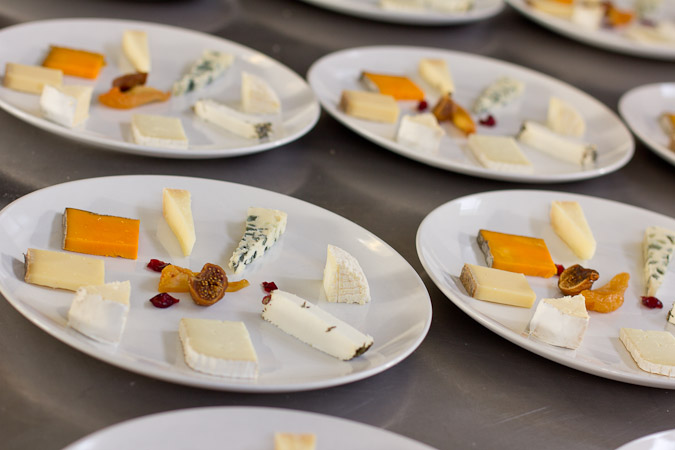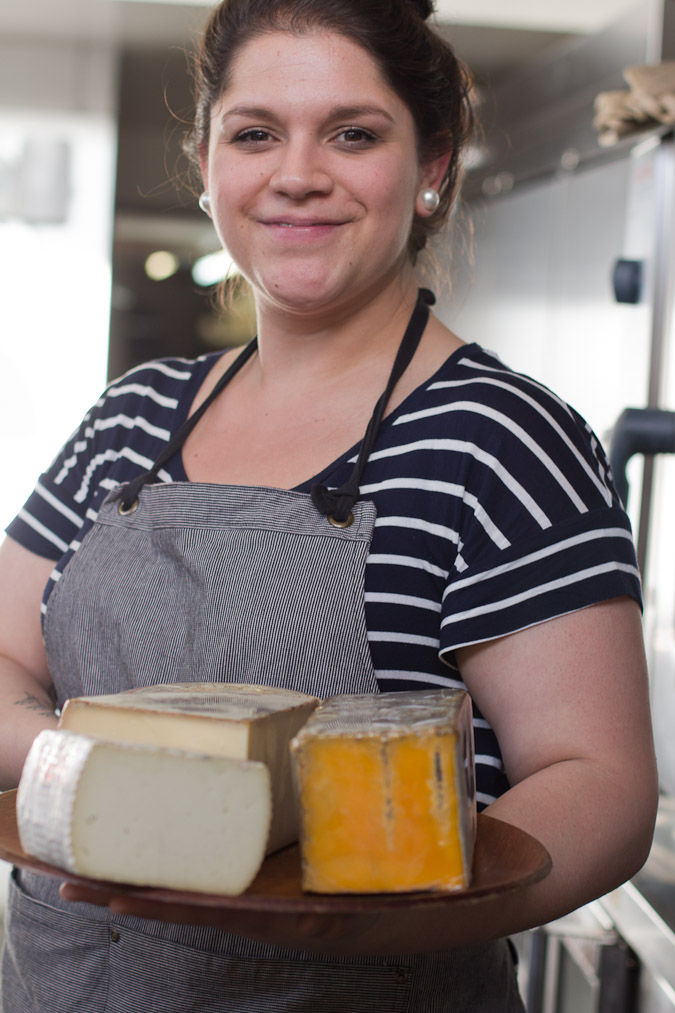Bubbles 101: A Wine and Cheese Pairing Series
 While reveling in the deliciousness of bubbles and cheese duos at the end of a sparkling wine and cheese pairing class I taught at the Cheese School of San Francisco last week, I took a final bite of the crottin and Scharffenberger Brut. My eyes may have teared up a little bit. I looked adoringly at the space as I remembered how boisterous students got with each bubbly sip and their sighs when tasting their favorite combo for the first time. I will explore with people further, I decided. I will share your glories beyond this room, I whispered to my empty glasses and the crumb of cheese left on my plate.
While reveling in the deliciousness of bubbles and cheese duos at the end of a sparkling wine and cheese pairing class I taught at the Cheese School of San Francisco last week, I took a final bite of the crottin and Scharffenberger Brut. My eyes may have teared up a little bit. I looked adoringly at the space as I remembered how boisterous students got with each bubbly sip and their sighs when tasting their favorite combo for the first time. I will explore with people further, I decided. I will share your glories beyond this room, I whispered to my empty glasses and the crumb of cheese left on my plate.

This post kicks off a five-post series focusing on sparkling wine and cheese pairing. Partially because I look forward to more research. But mainly because bubbles and cheese are some of the best pairings around. For every cheese, there is at least one sparkling that fits. See those plates above? It's pretty well-rounded, isn't it? There are as many types of sparklings as there are styles of dairy deliciousness, and what's available in the U.S. keeps broadening. We live in good vinifera and dairy times, my friends.
The posts will mainly focus on four types of sparkling wine below and the amazing breath of cheeses that pair with them.
- Méthode Champenoise - The classic
- Lambrusco - The misunderstood red
- Pétillant Naturel dry or off-dry -The super hip wine kid "Pet Nat"
- Méthode Ancestrale sweet (ish)
And buckle your seat belts, I might even slip a little Chenin and Prosecco in too.
Next week, we'll hit up Méthode Champenoise. But first….
The Bubbles: Where do you come from and why are you so delicious with cheese?
A sparkling wine sparkles because it generally undergoes two fermentations. Most sparkling, that is, more on Pet Nat later. Most wine goes through one fermentation- the grapes are crushed, juice is extracted, and the yeast starts eating the grape's sugar, converting it into alcohol. Then the wine ages to develop flavor and complexity.
Wine that will be made into sparkling is fermented a second time. Sugar is converted to alcohol during the first aforementioned fermentation. During the second, carbon dioxide is created. To provoke the second ferment, winemakers add a mix of more sugar and sometimes a little something extra like cognac at certain Champagne houses, to the wine. Then the yeast goes at it again. It's already converted the sugars into alcohol at this point, now it's just snacking on pure sugar for the fun of it. As it kicks back and eats the sugar, it creates bubbles.
Different sparklings are produced different ways, but the second fermentation or trapping of carbon dioxide in bottles is the building block of all sparkling wine.
Why does this second fermentation lends itself so deliciously to cheese?
The bubbles wrap around rich, fat dairy molecules and take them away to a happy place. This is a technical scientific discovery. I swear. It's also why cheese often pairs easier with beer than wine (not better, easier).
Sparklings generally have higher acidity. Acid helps to balance richness.
There are so many options that its almost impossible to not find a perfect pairing. Some are sweet, some are pink, some are red and some have tannins. Together, they form a perfect wine-flavored rainbow that's very giving in the pairing opportunities it provides to the world of fermented milk.
Bubbles, 101, Go! Next week, Méthode Champenoise and its cheese friends.





